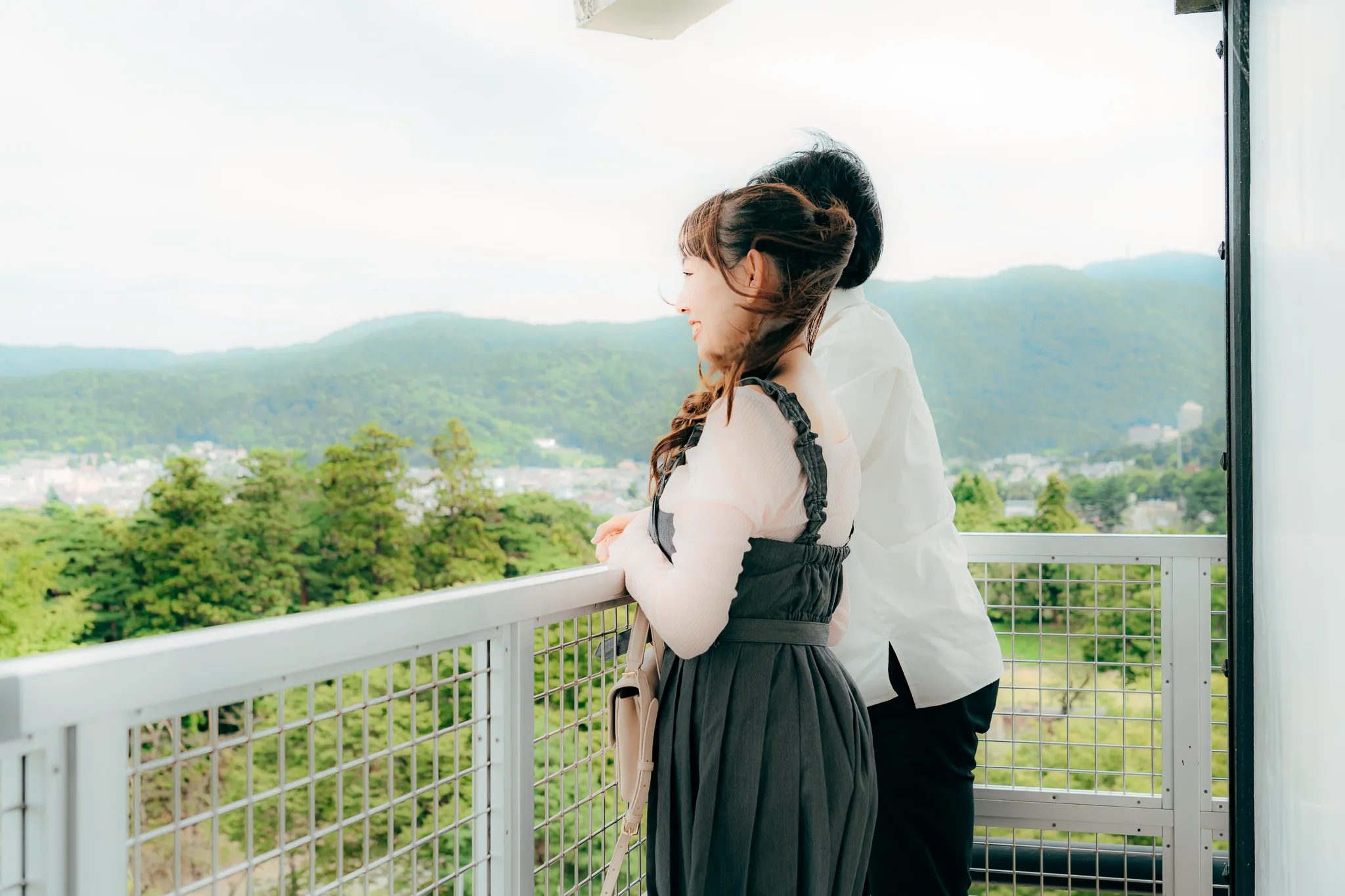

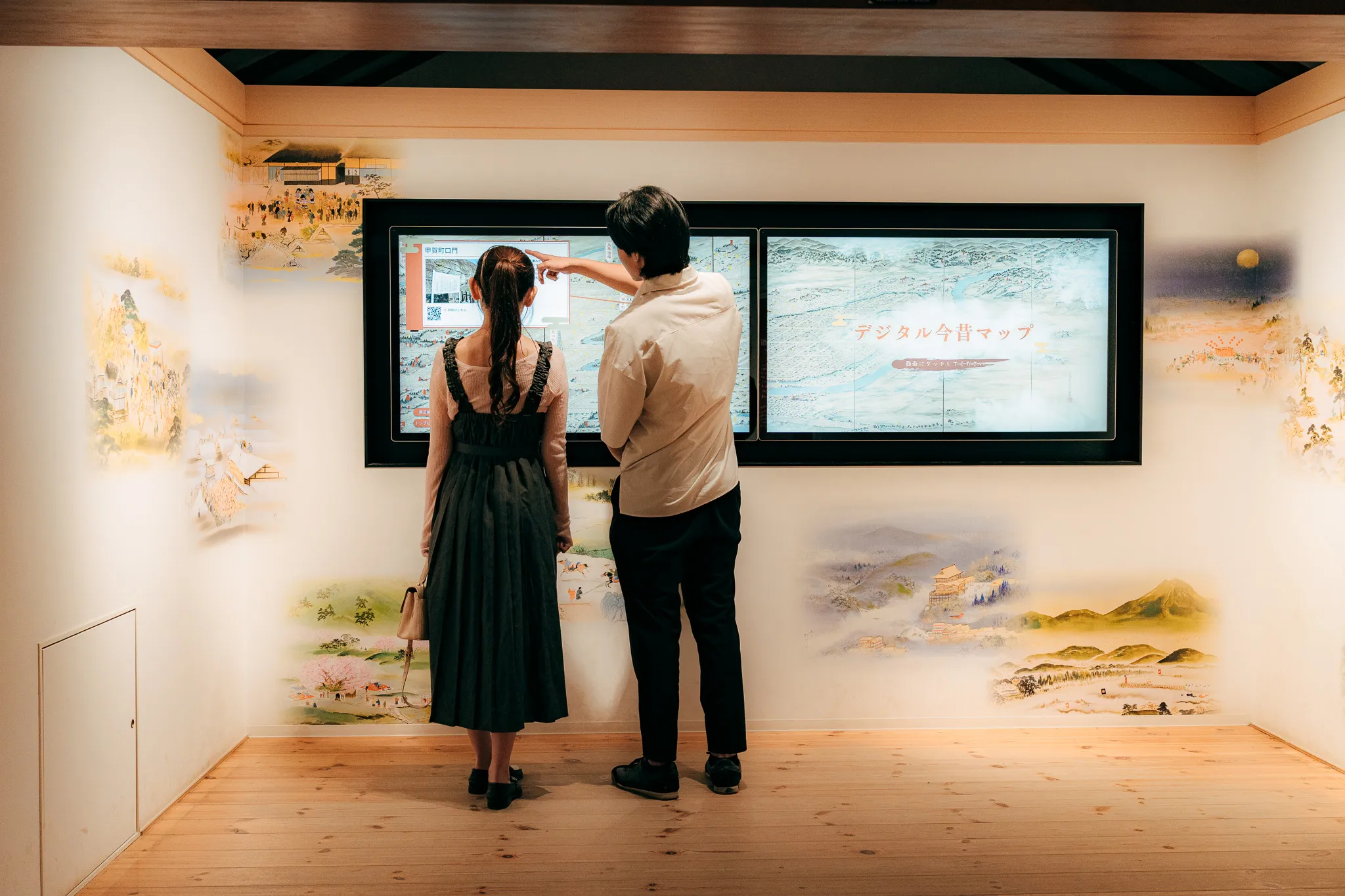
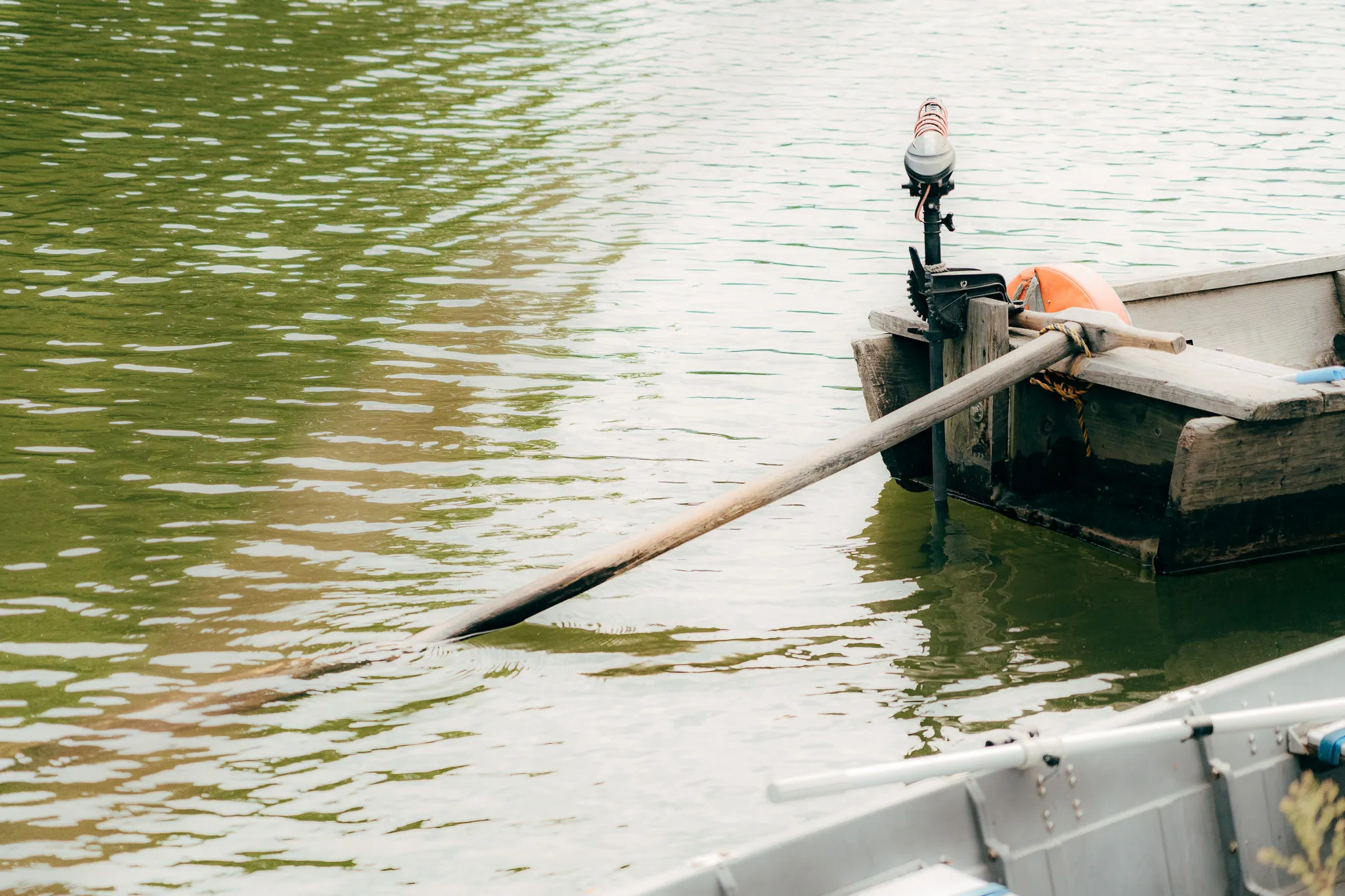
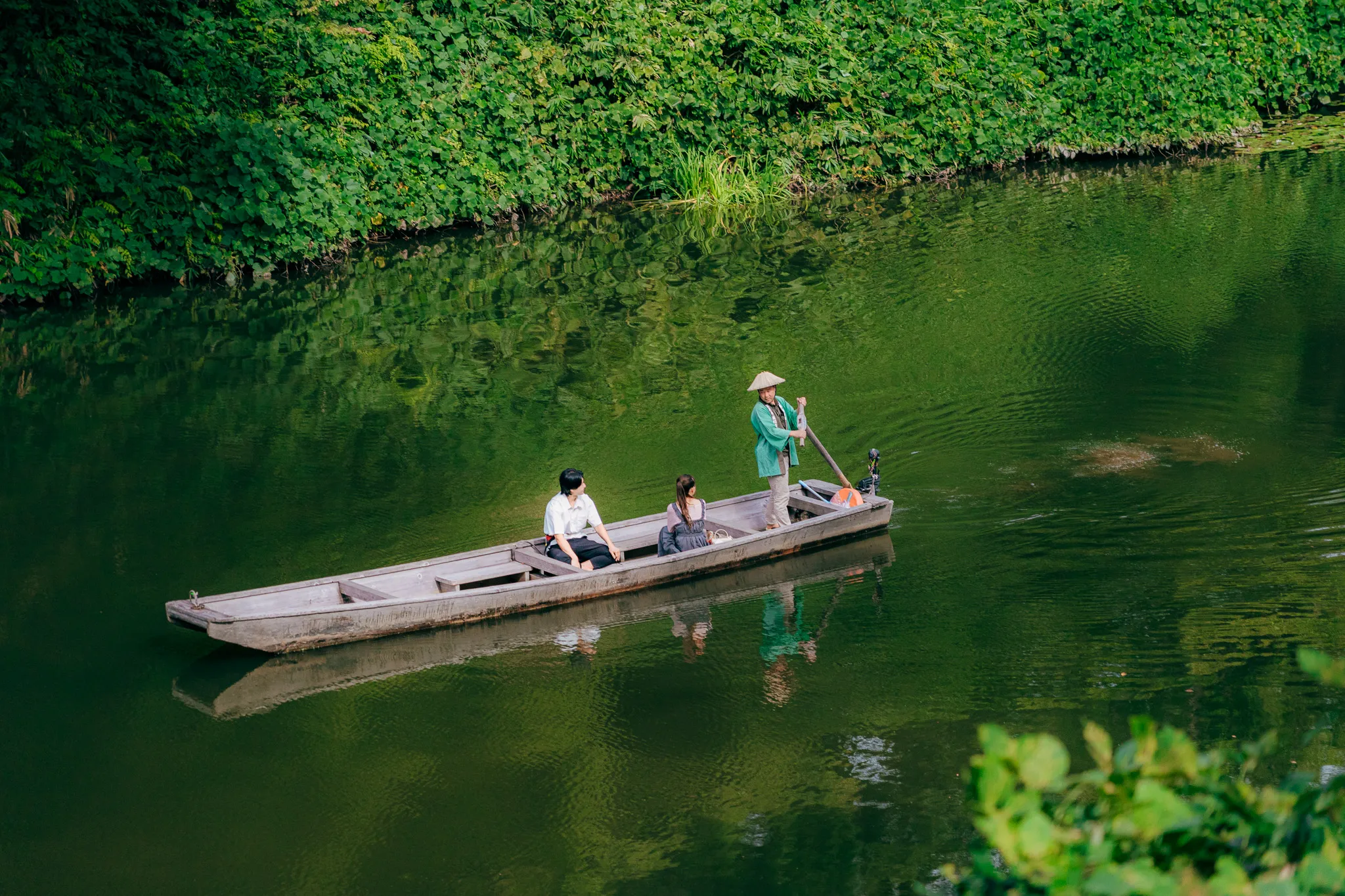
What is Tsuruga Castle?
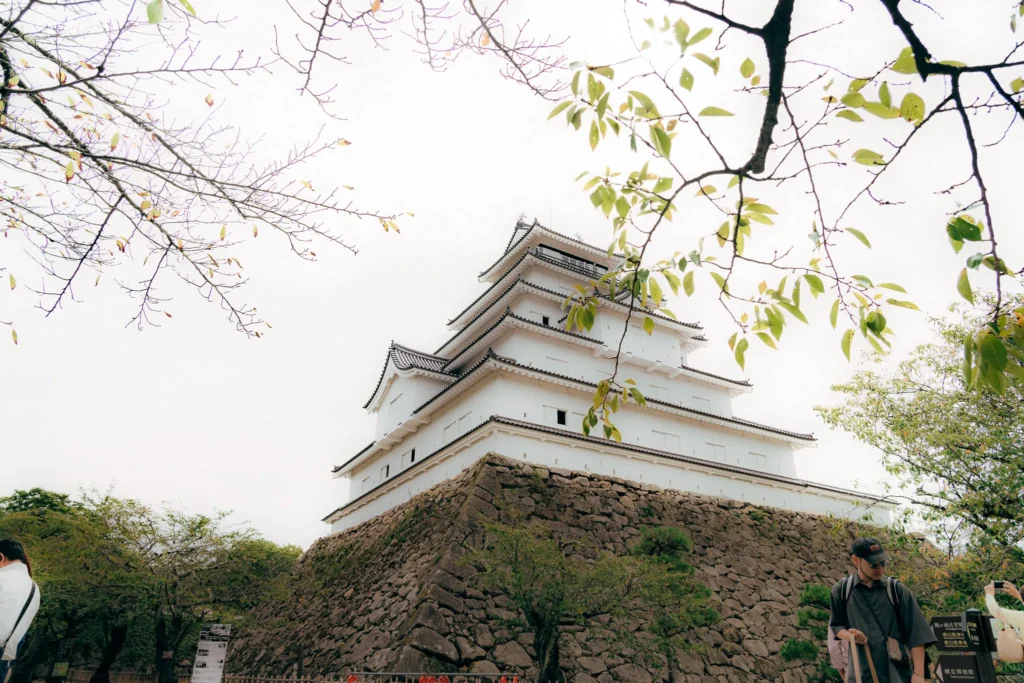
Rising above the center of Aizuwakamatsu City, Tsuruga Castle (Aizuwakamatsu Castle) is a renowned castle whose predecessor is said to be Higashikurokawa-kan, built by Ashina Naomori approximately 630 years ago. It is the only surviving castle tower with a red-tiled roof, and is known as the “crown jewel” of the Aizu region.
After the Meiji Restoration brought an end to the samurai era, Tsuruga Castle was regarded as a relic of the past and dismantled in 1874. However, it was reconstructed in 1965, and later in 2000, the Hihiyagura (Rice Storehouse Turret) and Minamihashirinagaya (Southern Longhouse) were restored using traditional Edo-period techniques. In 2011, the castle tower’s roof was replaced with red tiles, restoring its appearance from the late Edo period. Today, it stands as the only Japanese castle with a red-tiled keep.
The castle grounds have been developed as “Tsuruga Castle Park,” and most of it has been designated a National Historic Site. The interior of the castle tower also houses the “Wakamatsu Castle Tower Local Museum,” which displays historical materials from the Aizu region and serves as a place to learn about the Aizu domain and the Boshin War.
It is also a famous cherry blossom viewing spot, having been selected as one of the “Top 100 Cherry Blossom Spots in Japan”.
Highlights of Tsuruga Castle
Spring cherry blossoms, summer greenery, autumn foliage, and winter snow cover—Tsuruga Castle Park offers a different charm in each season. Spring is especially spectacular when the Somei-Yoshino cherry trees are in full bloom, bathing the stone walls and castle tower in a stunning pink backdrop. In autumn, the autumn leaves adorn the castle, creating a beautiful contrast between the stone walls and the foliage reflected in the moat. In winter, the entire castle is blanketed in snow, creating a mystical sight.
At night, the castle tower is lit up with illuminations throughout the seasons, creating a completely different atmosphere from the daytime.
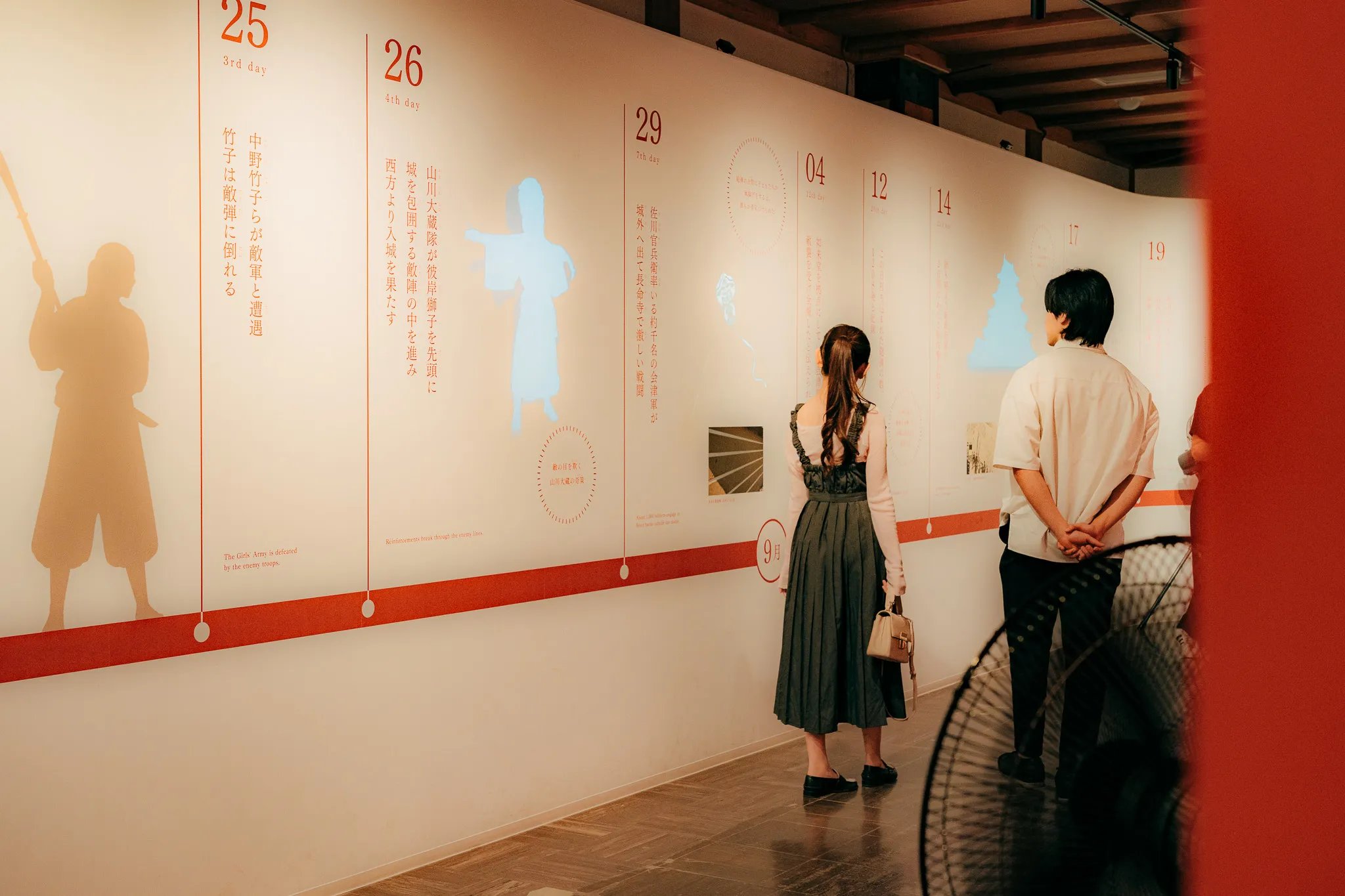



Tsuruga Castle
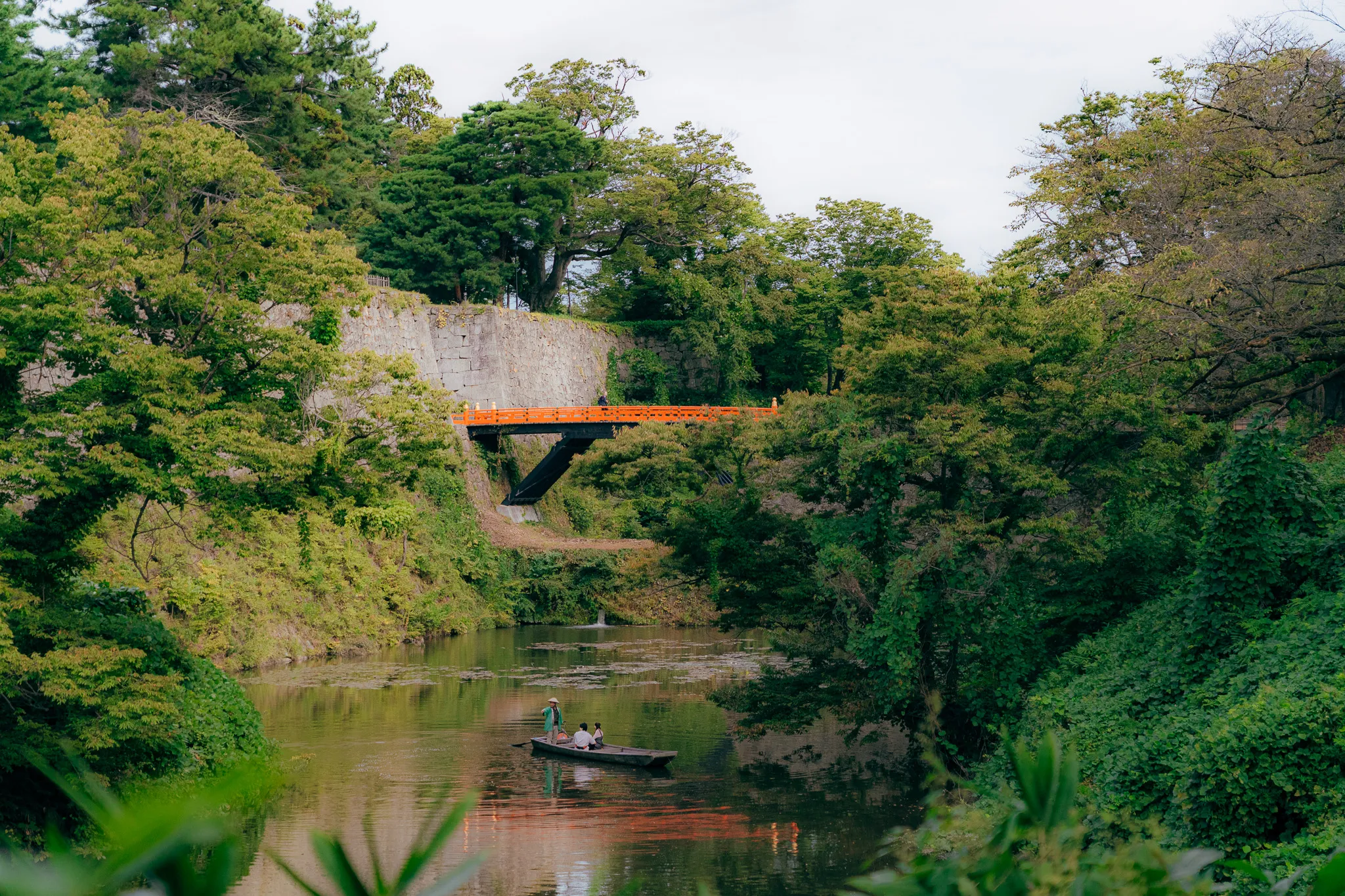

The moat of Tsuruga Castle
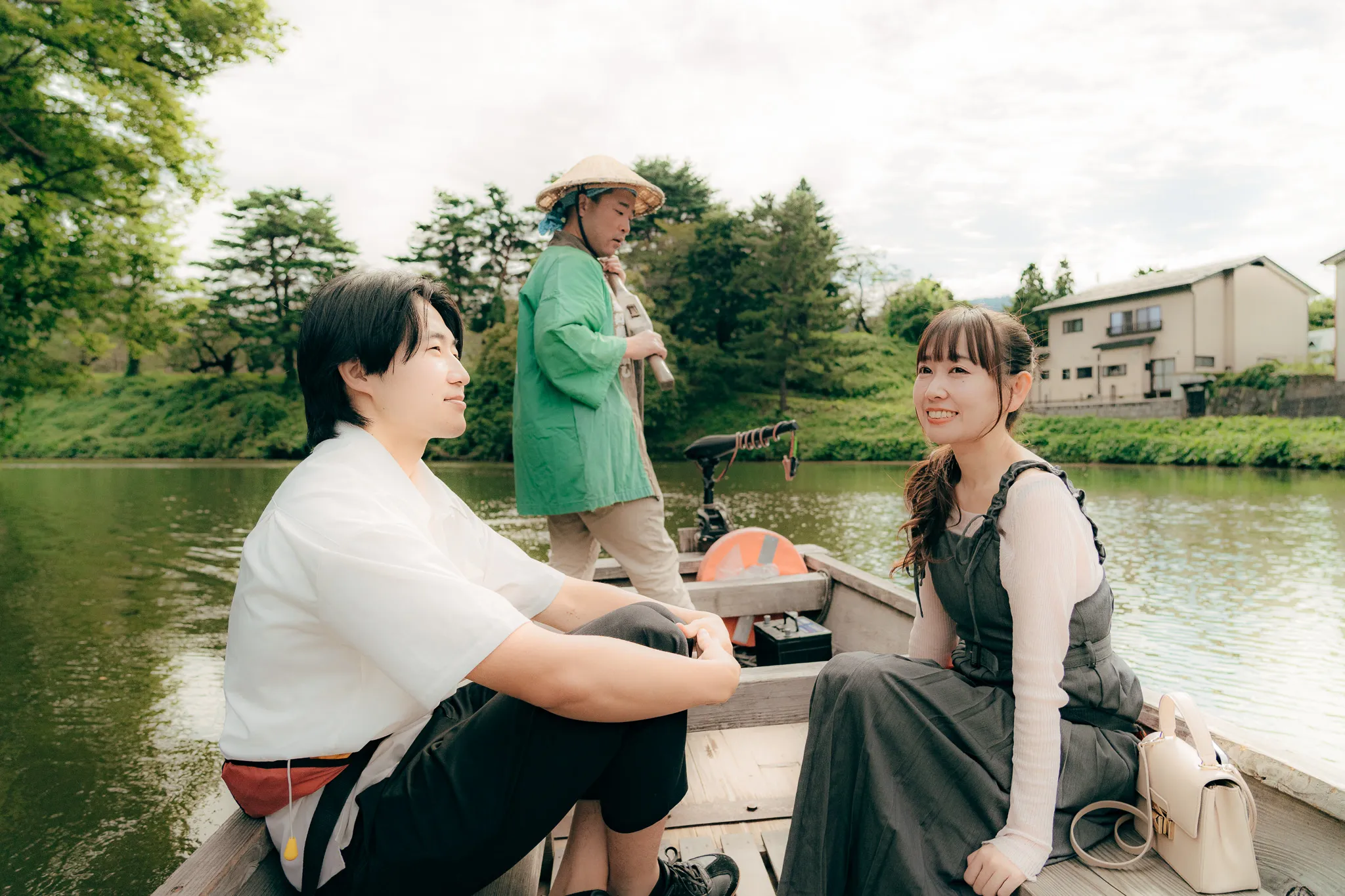

Experience a traditional Japanese boat cruise
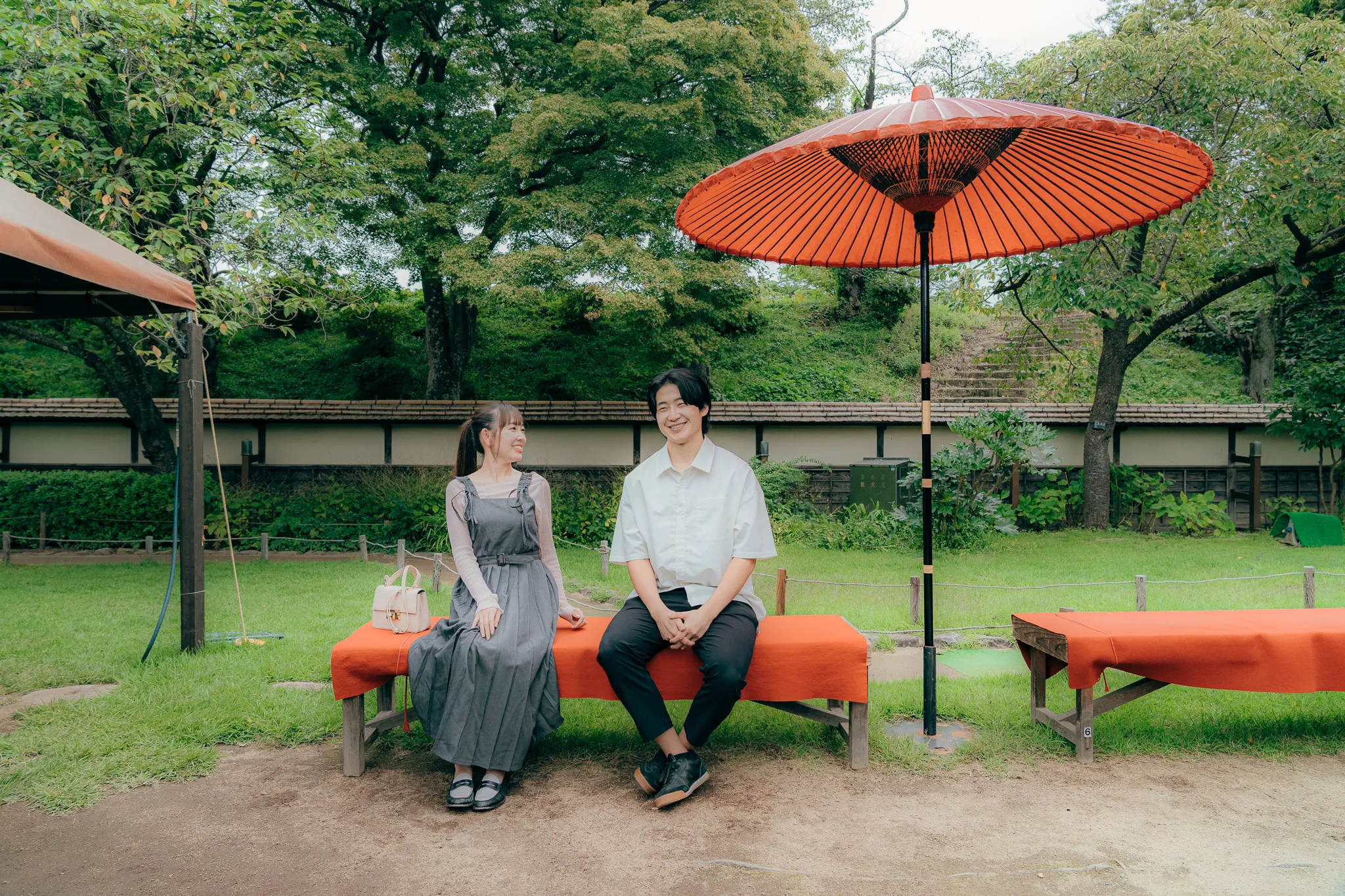

Rinkaku Tea House, a traditional Japanese tea room
Recommended Ways to Spend Your Time
First, take a leisurely stroll through the grounds of Tsuruga Castle Park, which spans a vast 220,000 square meters.From the observation deck on the top floor, you can enjoy a wide-ranging panoramic view of the Aizu townscape, Mount Bandai, and Mount Iimori. At dusk, the castle tower is lit up, creating a completely different look from the daytime.
If you tire of walking, head to Rinkaku and relax with matcha green tea and sweets while overlooking the garden. For 600 yen per seat, you can enjoy matcha and a sweet potato bun.
Visitors from April to September are also recommended to experience a traditional Japanese boat cruise.
The castle tower viewed from the water reveals a different perspective, offering a valuable experience to reflect on history while listening to the guide’s commentary.
For lunch, savor Aizu specialties at the Tsurugajo Kaikan restaurant. Located at the North Exit Gate entrance, the “Dining Area: Ninomaru” offers local dishes like wappa rice, sauce katsu don, and Kitakata ramen.
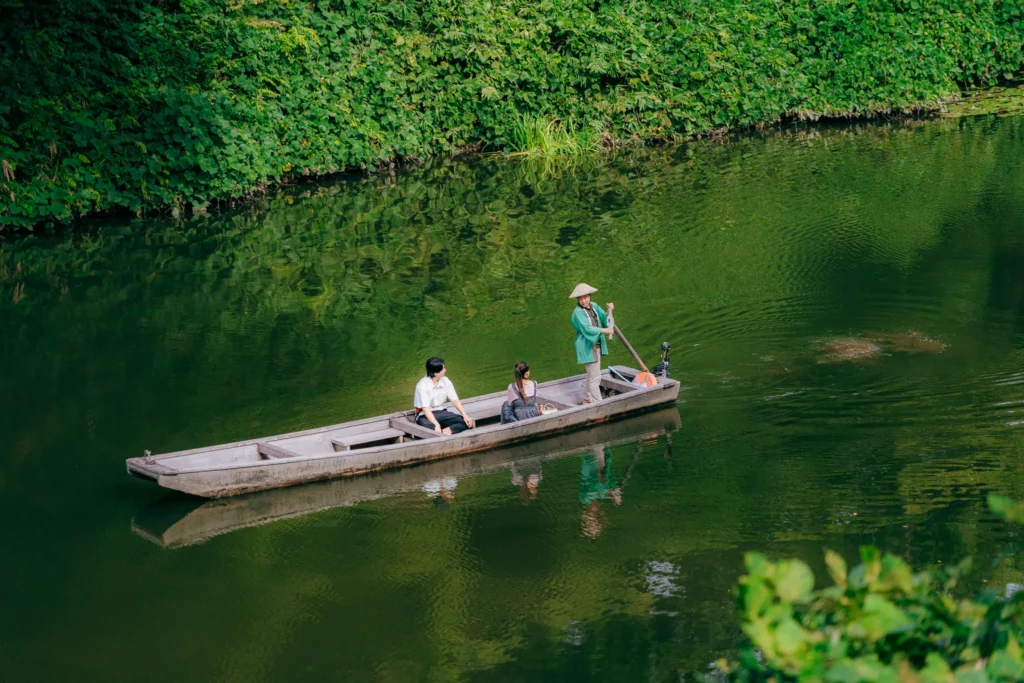

Basic Information
Business Hours/Closed Days: Castle Tower Admission: 8:30 AM – 5:00 PM (admissions open until 4:30 PM); Open year-round.
Price: Adults: 410 yen (520 yen for Castle Tower + Rinkaku), Elementary and Junior High School Students: 150 yen
*Free with presentation of a disability certificate.
Official Website: https://www.tsurugajo.com/tsurugajo/
Access
Address: 1-1 Oitemachi, Aizuwakamatsu City, Fukushima Prefecture 965-0873
・Train: From Aizuwakamatsu Station on the JR Ban’etsu West Line, take the “Haikara-san” or “Akabee” downtown sightseeing bus and get off at “Tsurugajo Iriguchi” (approximately 20 minutes).
・Car: Approximately 15-20 minutes from Aizuwakamatsu IC on the Ban’etsu Expressway.
・Other: There are three paid parking lots (360 spaces in total) in the vicinity: Nishidemaru, East Exit, and South Exit. The first hour costs 200 yen, and each additional hour costs 100 yen. Please note that there may be temporary closures or entrance restrictions in the event of bad weather or heavy snowfall in winter.


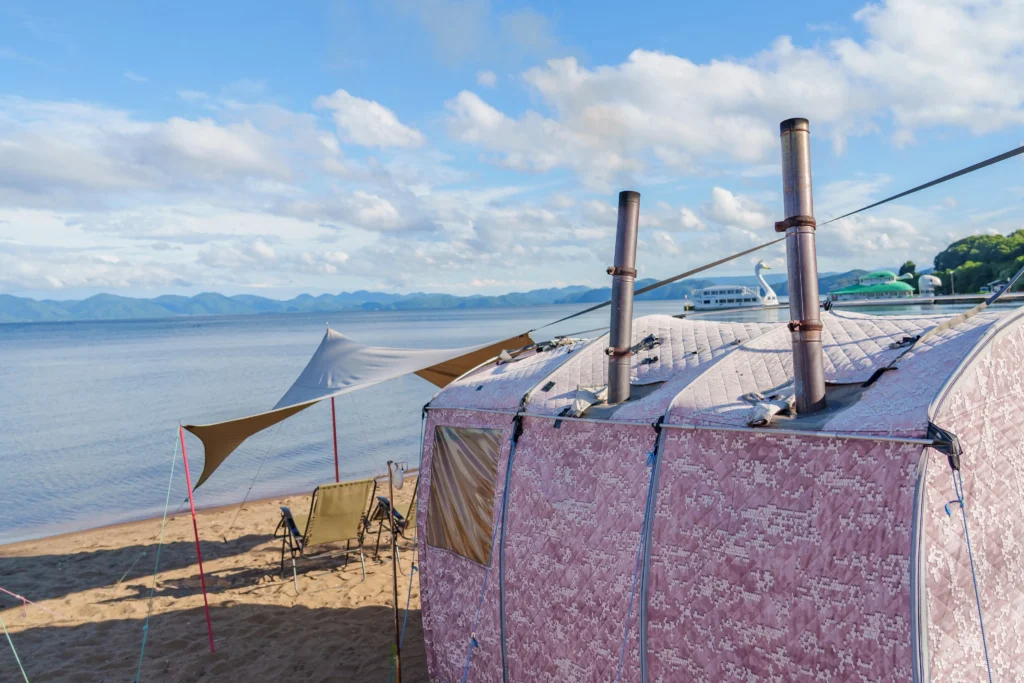
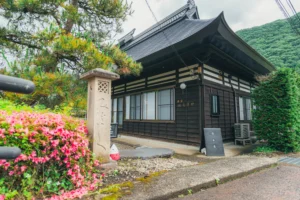
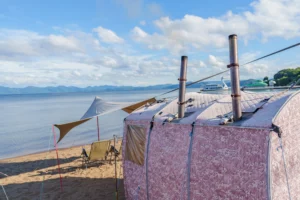
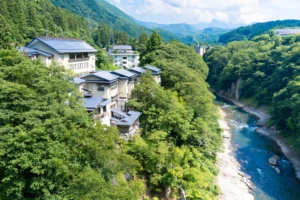
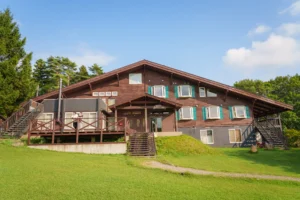
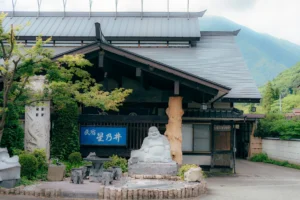
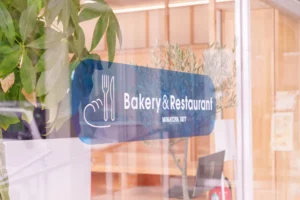

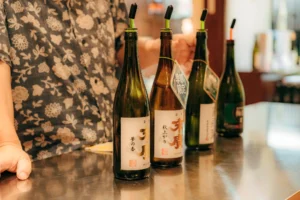
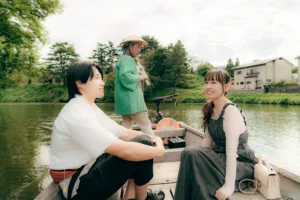

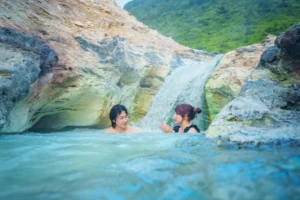

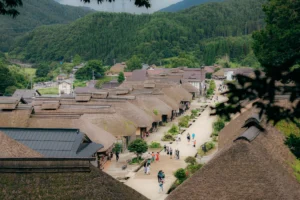
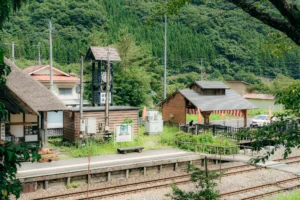



local history museum